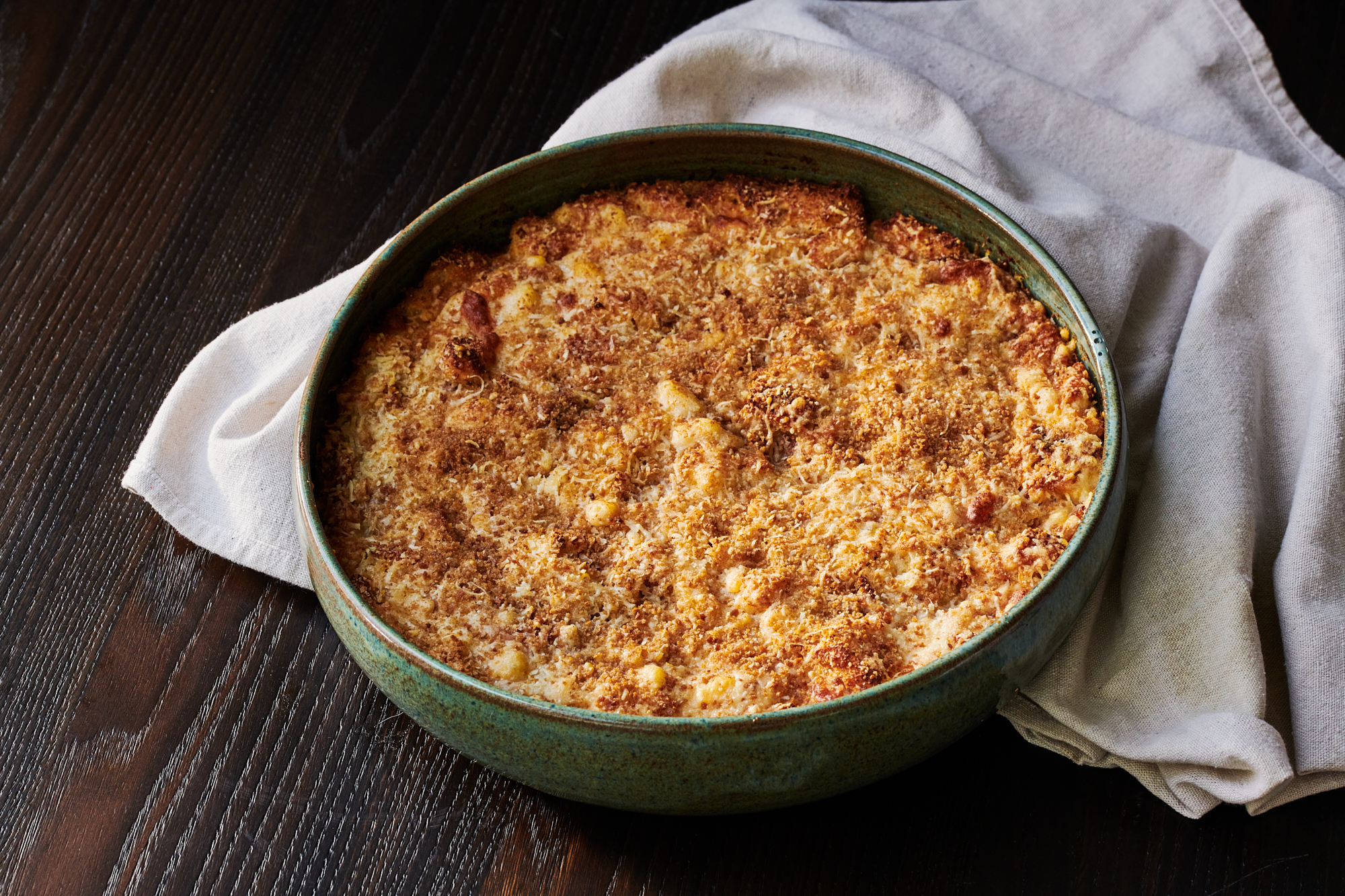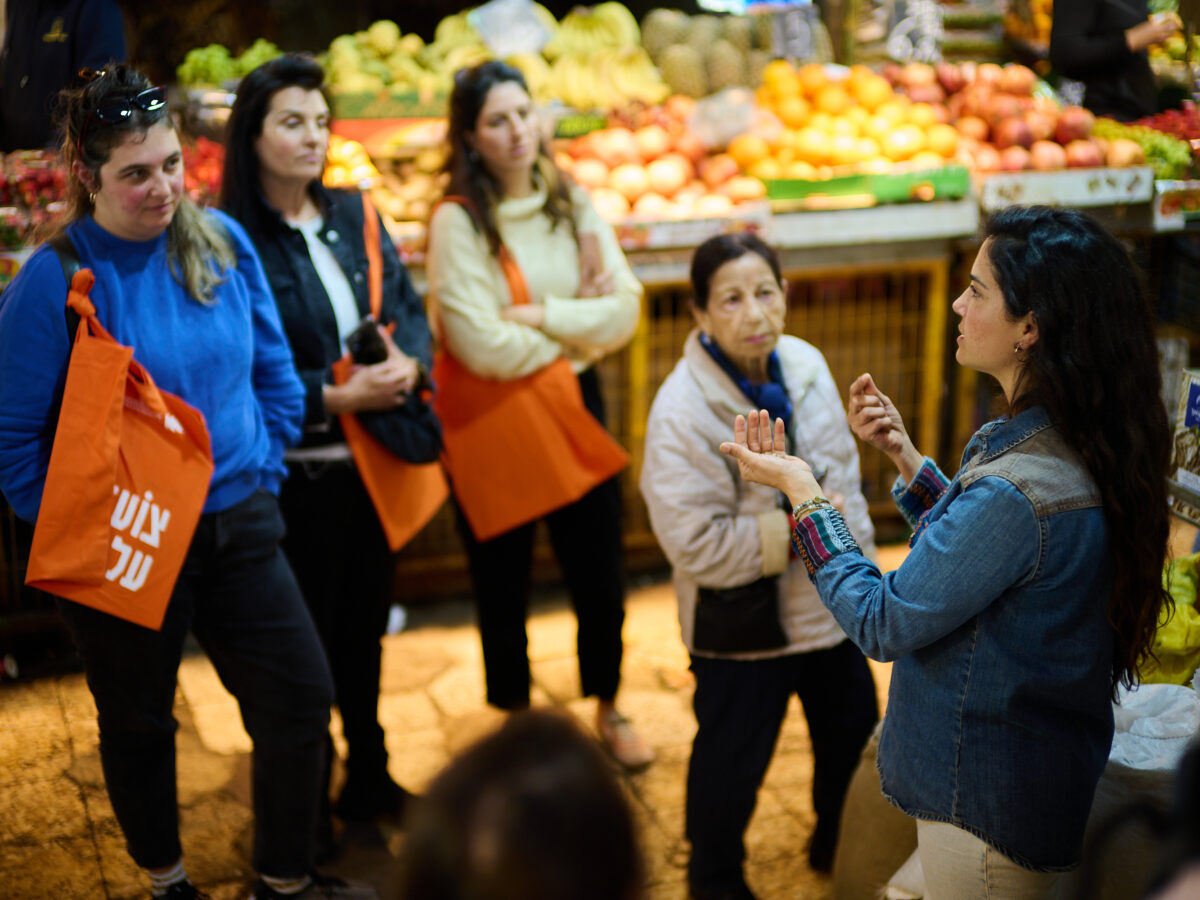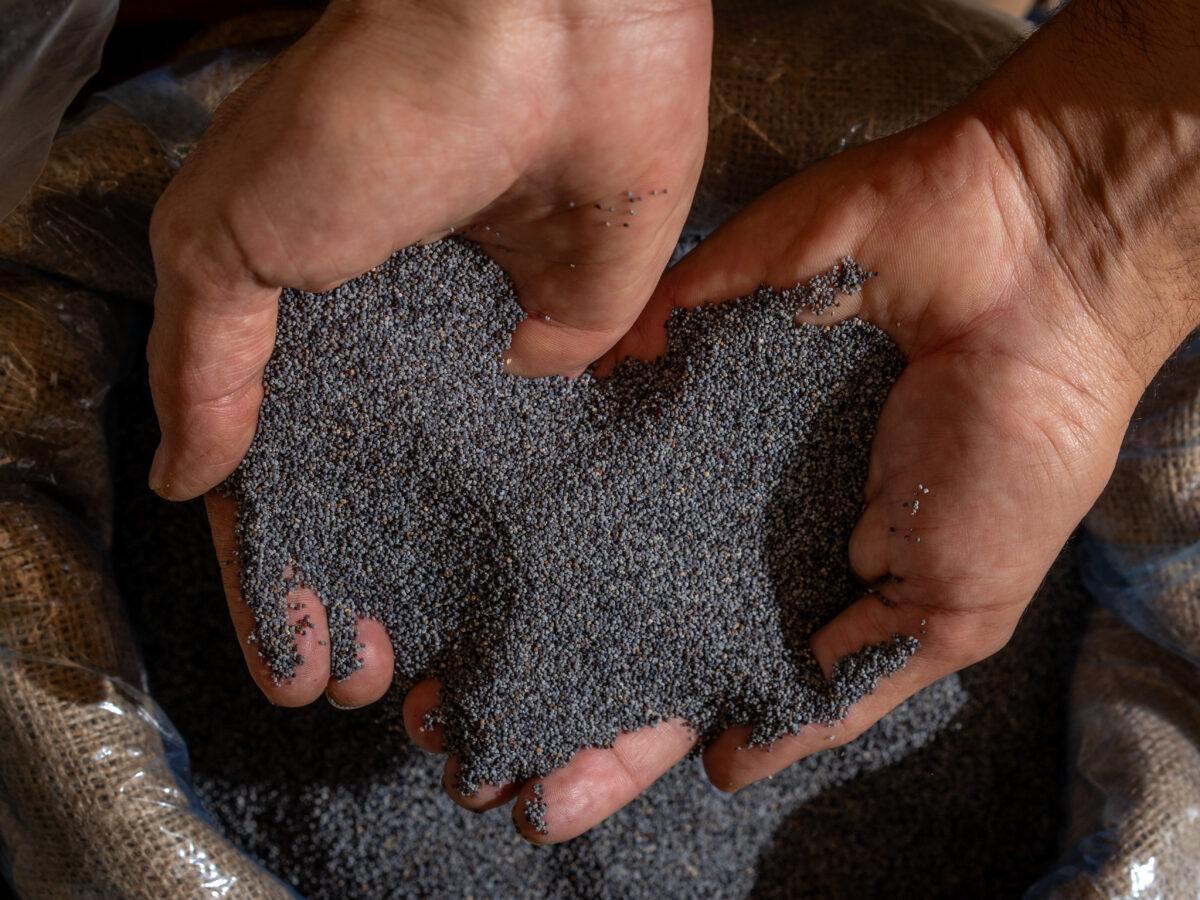In Israel, nearly every family has a go-to pashtida recipe. The simple casseroles bound together by a couple of eggs, can be made with almost anything on hand from vegetables that lost their crunch from too long of a stay in the refrigerator, to the last bit of cottage cheese in the container, to leftover rice and noodles. Somehow, when they’re baked together, they become something greater than the sum of their parts.
Pashtidot (the Hebrew plural) can be baked in advance or even frozen and they work just as well as a side dish as they do a light meal on their own. They are the ultimate utility food. These are some of the reasons why Israelis are so fond of the dish, explains Ruth Sirkis in her cookbook “Pashtidot Olamiyot” (“International Savory Pies”).
Depending who you ask, the term pashtida can also encompass egg tarts and quiche, but the common crustless Israeli one has roots in Jewish kitchens around the world. As Gil Marks points out in the “The Encyclopedia of Jewish Food,” by the Middle Ages, pastida — as it was called then — was already a cornerstone of Shabbat meals in European Jewish communities.
Originally it was made with two layers of dough stuffed with a filling, pastida probably evolved to symbolize the double portion of manna provided to the Israelites in the desert for Shabbat, each sandwiched between two layers of dew. The filling was usually lamb and sometimes fish, while cheese and seasonal vegetables were popular during spring and summer months.
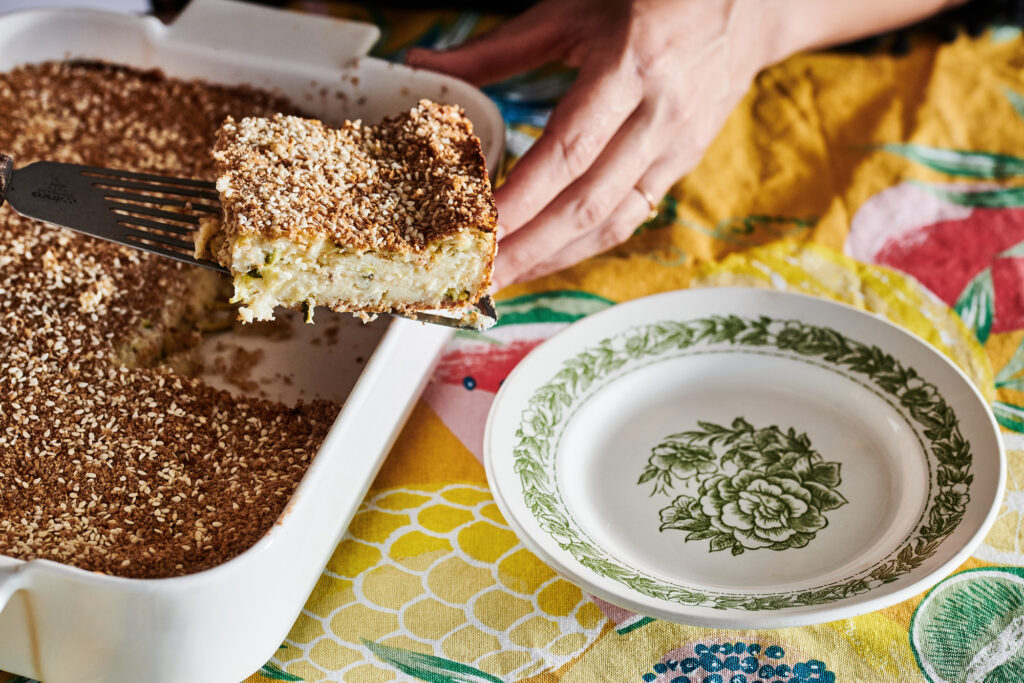
The Academy of the Hebrew Language offers several explanations of the origin of the Hebrew word pashtida — with an SH sound. According to one, the great Torah and Talmud commentator Rashi used the word in 11th century France to describe a meat-filled pastry in tractate Pesachim; it may have been a derivation of the German word pastete, a pastry of meat wrapped in dough like the French pâté en croûte. The Academy also adds that the word is frequently used in halachic literature.
According to linguist Elon Gilad, however, it was Rabbi Nathan Ben-Yehiel of Rome, Rashi’s contemporary, who first used the word. Marks also mentions it and explains that Medieval Jews of Spain enjoyed big pies called pastida, a metamorphosis of the Latin pastillus (meaning “smalls pie” or “small loaf”). The word entered Hebrew through Ladino as “pastel,” meaning small fried pies.
While these words typically referred to meat-filled pies, in Israel, the dish is more often vegetarian. With a nearly year-round hot climate, we might assume today’s pashtidot just following in the footsteps of the spring and summer versions of their European ancestors.
But there may be more going on here. According to Marks, a shortage of meat in 1550 inspired new versions of the traditional Shabbat pie. And as it moved east, Ashkenazi Jews replaced it with kugel, which is basically a noodle or potato-based pashtida. Sephardi Jews continued to make smaller meat-filled pies, like empanadas and bourekas. The original pastida, close to extinction, experienced a grand revival in the first decades of modern Israel, and under its new, updated name, “pashtida,” gradually became a cornerstone of Shavuot celebrations.
“Aich L’Vashel B’Zman Milchama?” (“How to Cook During War?”) A cookbook published in 1942, before the establishment of the country, has a selection of recipes for inexpensive, belly-filling meals. It recommends using leftover bread and porridge to make pies. Three pashtidot made with bread, semolina, or rice and noodles, appear in the everyday menus; while the cheese pashtida is reserved for the Shabbat and holiday menu.

Today, the power of the Israeli pashtida comes from both our need to make the most leftovers and the dish’s ability to seamlessly welcome almost anything. Culinary Journalist Gil Hovav sums it up nicely in a Facebook post from 2021: “How odd: You try to come up with something new, search for inspiration in books and online, ask, watch, steal, add your own interpretation, recreate, and invent. Sometimes it works, sometimes it doesn’t. But when you make a pashtida from what you found in the fridge (including leftover rice from yesterday!) — bingo.”
Pashtidot are a key part of the Israeli kitchen and almost every family has at least one beloved version they never tire of making. And new recipes have continued to star in Israeli cookbooks, with ingredients reflecting the ingredients available and culinary trends of the era.
The first cookbooks dedicated entirely to the topic were published in the 1980s – first by Benny Saida, and immediately afterwards by Kobi Bar, who has all-in-all published three books dedicated to the popular pie. Authors such as Ruth Sirkis, Nira Russo, Hanna Shaulov, Zipporah Kreizman, and Danit Salomon have since made contributions of their own to the library of pashtidot cookbooks.
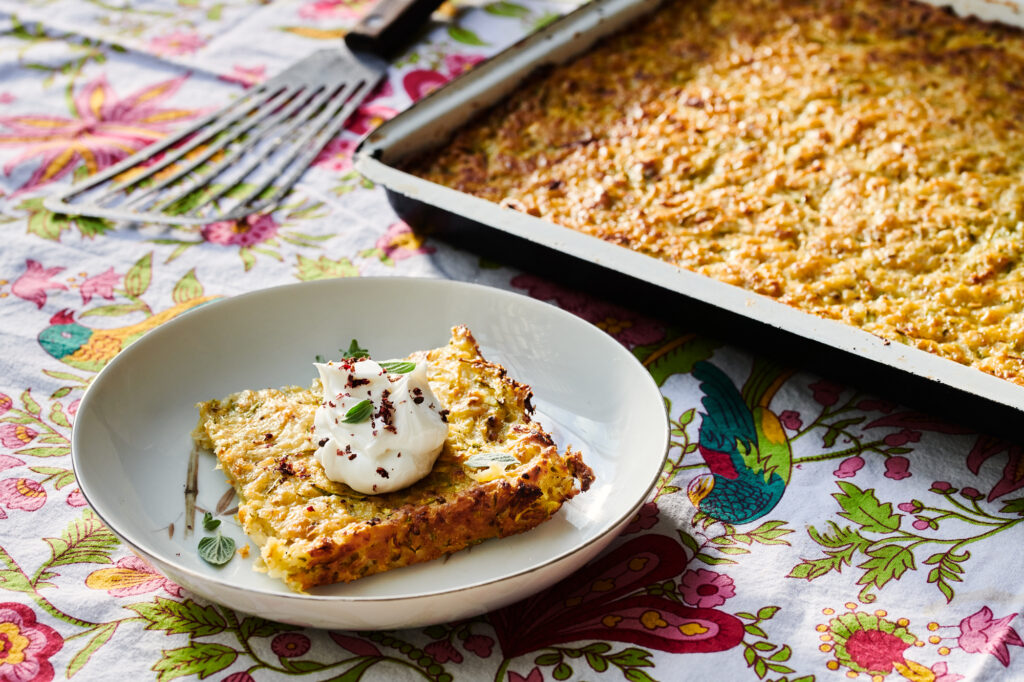
Today, pashtidot recipes is a popular search term on Google year round but during Shavuot, which is traditionally celebrated with dairy dishes, it almost doubles. And, in recent years, it’s also become a Hanukkah standard, served alongside latkes and sufganiyot after lighting the candles.
For Shavuot this year, we asked five chefs and food writers to share a family or personal recipe for pashtida and the story behind it. Celebrated cookbook author Adeena Sussman told us about the pashtidot her mother made to use up leftover cheese from a small kosher dairy business her family ran out of their California garage. And MasterChef winner Hillel Gardi recalled the simple zucchini pashtidot his family found in his grandmother’s refrigerator after she passed away.
No matter the recipe, pashtida always has a story to tell.
